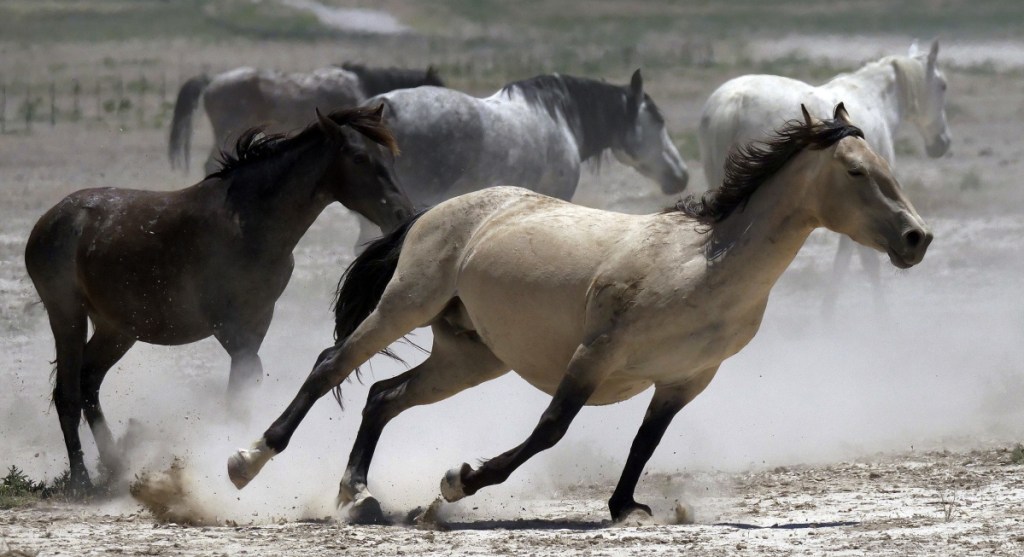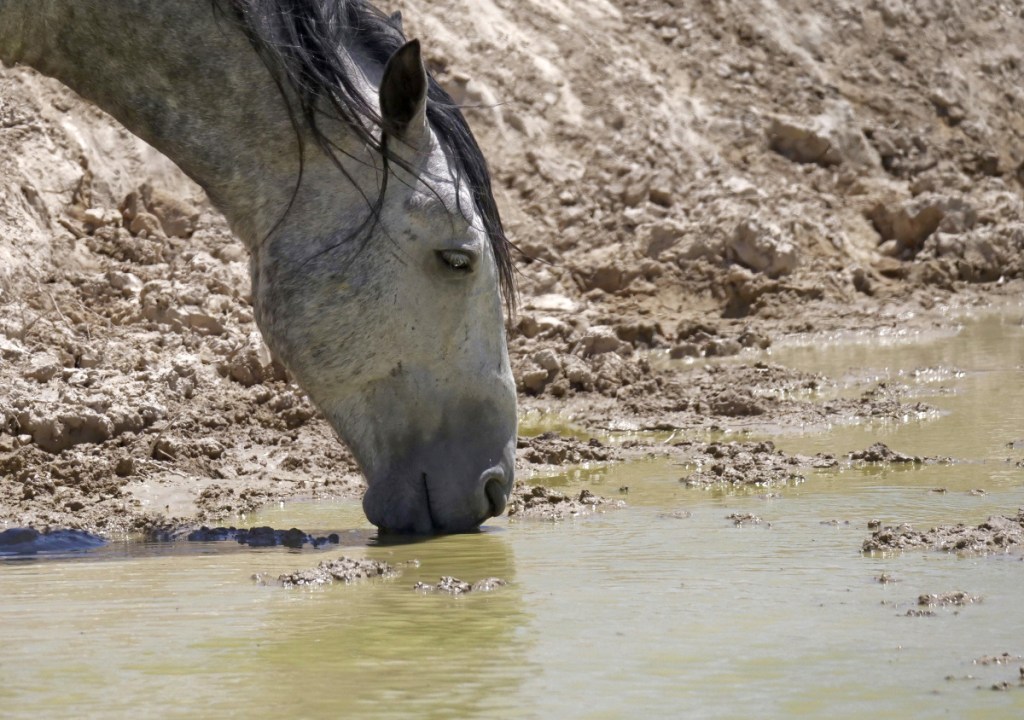SALT LAKE CITY — Harsh drought conditions in parts of the American West are pushing wild horses to the brink and spurring extreme measures to protect them.
For what they say is the first time, volunteer groups in Arizona and Colorado are hauling thousands of gallons of water and truckloads of food to remote grazing grounds where springs have run dry and vegetation has disappeared.
Federal land managers also have begun emergency roundups in desert areas of Utah and Nevada.
“We’ve never seen it like this,” said Simone Netherlands, president of the Arizona-based Salt River Wild Horse Management Group. In May, dozens of horses were found dead on the edge of a dried-up watering hole in northeastern Arizona.
As spring turned to summer, drought conditions turned from bad to worse, Netherlands said.
Parts of Utah, Colorado, Arizona and New Mexico are under the most severe category of drought, though extreme conditions are present from California to Missouri, government analysts say. Parts of the region have witnessed some of the driest conditions on record, amid a cycle of high temperatures and low snowmelt that appears to be getting worse, National Weather Service hydrologist Brian McInerney said.
The dry conditions have fed wildfires that have destroyed hundreds of buildings across the West. This month, a firefighter was killed battling a blaze near California’s Yosemite National Park.
The federal Bureau of Land Management – which oversees vast expanses of public land, mostly in the West – says the problem facing wild horses stems from overpopulation aggravated by severe drought. The region is home to roughly 67,000 wild horses.
“You’re always going to have drought issues. That’s a common thing out on the range,” agency spokesman Jason Lutterman said. “What really exacerbates things is when we’re already over population, because then you already have resource issues.”
The agency’s emergency roundup in western Utah began a week ago, aiming to remove roughly 250 wild horses from a population of approximately 670. The operation is expected to take several weeks.
Once the horses are rounded up, the government gives them veterinary treatment and offers them for sale or adoption. Those that aren’t sold or adopted are transferred to privately contracted corrals and pastures for the long term.
A similar emergency roundup began this month in central Nevada, where officials said some horses in a herd of 2,100 could die from lack of water in coming weeks. The operation was quickly halted, ironically because of extreme rain, but will likely resume.
“The ground’s so dry it’s not absorbing that water. It’s running off,” bureau spokeswoman Jenny Lesieutre said.
Volunteers are also taking action.
In Colorado, volunteers say they’re preparing to bring up to 5,000 gallons of water per day to a herd of 750 thirsty horses.
Copy the Story LinkSend questions/comments to the editors.




Success. Please wait for the page to reload. If the page does not reload within 5 seconds, please refresh the page.
Enter your email and password to access comments.
Hi, to comment on stories you must . This profile is in addition to your subscription and website login.
Already have a commenting profile? .
Invalid username/password.
Please check your email to confirm and complete your registration.
Only subscribers are eligible to post comments. Please subscribe or login first for digital access. Here’s why.
Use the form below to reset your password. When you've submitted your account email, we will send an email with a reset code.